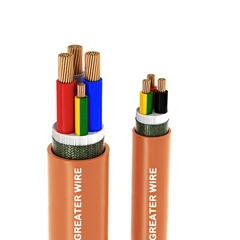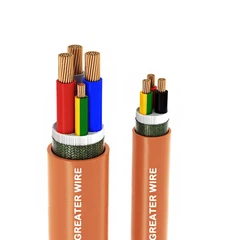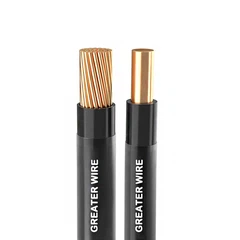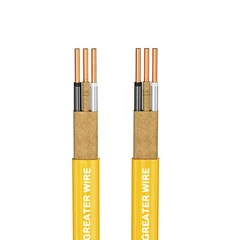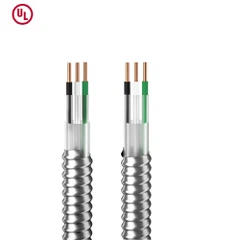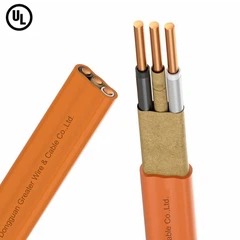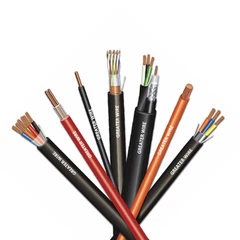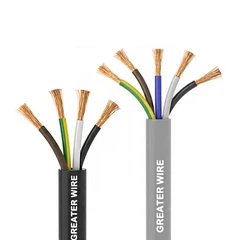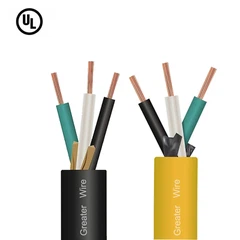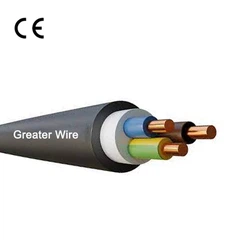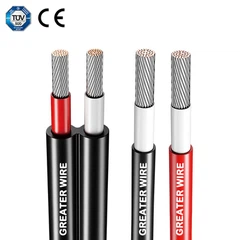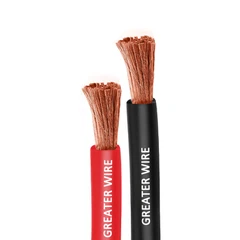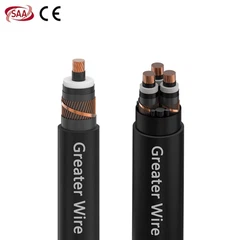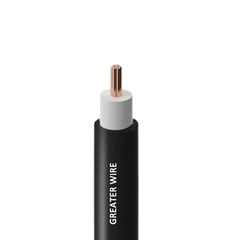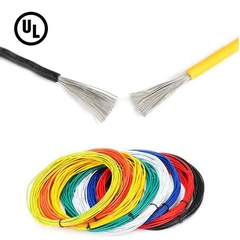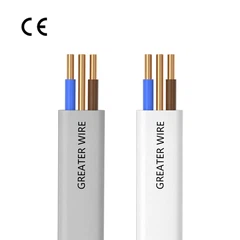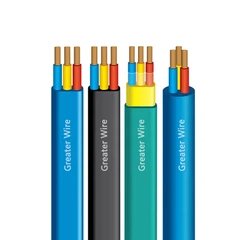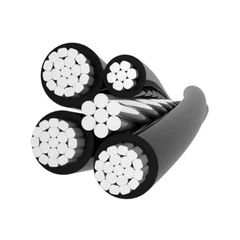Armored cables are widely used in various environments that require mechanical protection of cables in the fields of power systems and industrial automation. SWA (Steel Wire Armored) and SWB (Steel Wire Braided) are two common types of armored cables. Although they differ only by one word in naming, there are significant differences in their structural characteristics, performance indicators, and applicable environments.

1, Overview of Armored Cables
1.1 What is armored cable
Armored cable refers to a type of cable in which a metal armor layer is wrapped around the basic insulation structure of the cable to enhance its mechanical properties, compressive strength, and protective capabilities. The armor layer is usually made of steel strip or steel wire, and its main functions include:
Improve tensile and compressive strength;
Enhance the ability to resist mechanical damage;
Prevent external electromagnetic interference;
Provide a certain degree of protection against rodent and ant bites.
According to the different structural methods of the armor layer, common armor forms include steel strip armor, steel wire armor, braided armor, etc. Among them, steel wire armor is divided into two forms: single strand steel wire winding and steel wire braiding, corresponding to SWA and SWB cables respectively.
1.2 Naming rules for armored cables
In British standards, SWA and SWB are commonly abbreviated terms used to indicate different forms of armor structures:
SWA:Steel Wire Armoured, Refers to steel wire armor (usually a single layer of steel wire wrapped).
SWB:Steel Wire Braided, Refers to steel wire braided armor (i.e. steel wires arranged in a staggered manner in a braided manner).
Although both use steel wire as the armor material in their structure, there are significant differences in layout and craftsmanship, resulting in different performance characteristics.
2, SWA Armored Cable Detailed Explanation
Swa cable, also known as steel wire armored cable, represents steel wire armored cable. This type of cable is known for its durability and sturdiness, especially in harsh environments where it can provide additional mechanical protection while maintaining a certain degree of flexibility. Steel wire armored cables are typically used in applications that require high mechanical protection, such as direct burial or environments that require resistance to external pressure and tension. Its structure includes steel wire armor, designed to provide additional mechanical protection and enhance the durability of the cable.
2.1 Structural composition
SWA armored cables typically consist of the following parts:
Conductor: generally made of copper or aluminum material;
Insulation layer: cross-linked polyethylene (XLPE) or polyvinyl chloride (PVC) is commonly used;
Inner sheath (protective layer): for inner layer protection, commonly made of PVC;
Armor layer: a layer of unidirectionally wound galvanized steel wire;
Outer sheath: The outermost layer of the entire cable, usually made of black PVC material, with certain waterproof, UV resistant, and corrosion-resistant capabilities.
2.2 Main Characteristics
Strong compressive strength: Due to the tight arrangement of steel wire winding, SWA cables have more advantages in vertical laying or heavy pressure environments;
High mechanical strength: suitable for underground burial or industrial environments that are frequently impacted by external forces;
Not easy to bend: The steel wire winding structure limits its flexibility, making it inconvenient to use in small spaces and situations that require multiple turns;
Poor electromagnetic interference shielding: The steel wire is a non-woven structure with relatively limited shielding ability.
2.3 Application Scenarios
SWA cables are widely used for:
Main power supply lines in construction projects;
Underground cable laying;
Heavy industrial environments such as petrochemicals and mining;
High mechanical stress areas such as bridges, power stations, and substations.

3, Detailed explanation of SWB armored cable
SWB cable, also known as steel wire braided cable, represents steel wire braided cable. The characteristic of this cable is that it has a steel wire braided layer, mainly used to provide strength and electromagnetic interference (EMI) shielding. SWB cables are typically used in industrial environments that require resistance to external interference and provide a certain level of mechanical strength. The steel wire braided layer not only enhances the physical strength of the cable, but also effectively reduces electromagnetic interference, ensuring stable signal transmission.
3.1 Structural composition
The basic structure of SWB cable is similar to SWA, with the main difference being the weaving method of the armor layer:
Conductor: Copper or Aluminum;
Insulation layer: usually XLPE or PVC;
Inner sheath;
Braided armor layer: composed of multiple thin steel wires interwoven to form a flexible steel mesh structure;
Outer sheath: PVC or low smoke halogen-free material.
3.2 Main Characteristics
Good flexibility: The woven structure provides higher flexibility, making it easy to bend and wire;
Excellent seismic performance: suitable for installation in places with frequent vibration or mechanical impact;
Excellent wear resistance: The woven layer improves the friction resistance to a certain extent;
Strong shielding performance: The steel wire staggered structure has good electromagnetic interference shielding ability;
The compressive performance is slightly lower than SWA: due to the loose weaving structure, its ability to resist external pressure is slightly weaker.
3.3 Application Scenarios
SWB cables are commonly used for:
Automated control system;
Instrument circuit connection;
Mobile device power cable;
Industrial robotic arms, robot cable wiring;
Rail transit, port equipment, etc. with frequent vibrations.

4, Comparison of the core differences between SWA cable and SWB cable
| Item | SWA CABLE | SWB CABLE |
| Armor structure | single-layer steel wire wrapped | multi strand steel wire woven |
| flexibility | poor | good |
| Compressive performance | Strong | weak |
| Shielding performance | general | good |
| Resistance to mechanical impact | strong | medium |
| application environment | Underground burial and heavy load environment | Frequent vibration, requiring high flexibility |
| Installation difficulty | Installation requires a large space | Easy to install wiring |
| cost | relatively low | Relatively high |
5, Differences in execution standards and manufacturing processes
5.1 Comparison of Domestic and Foreign Standards
The design and application of SWA and SWB are often based on the following standards:
British Standards (BS5467, BS6724);
International Electrotechnical Commission standard (IEC 60502);
Chinese standards (GB/T 12706.2, GB/T 19666, etc.);
Enterprise standards, customer customized standards, etc.
The SWA structure usually complies with BS5467, while SWB is mostly used for signal control cables, referring to standards such as BS5308.
5.2 Production and Manufacturing Process
SWA cables have high requirements for the winding angle, density, and uniformity of the armored steel wire during the manufacturing process to ensure their compressive performance. SWB cables require high-precision weaving equipment to ensure even interweaving of steel wires and consistent outer diameter of the cable, avoiding damage to the cable core during bending.

6, How to choose SWA or SWB armored cable?
In practical applications, the selection of suitable armored cables requires comprehensive consideration of the following factors:
Cable usage: Recommended for power transmission SWA, recommended for signal transmission SWB;
Installation environment: Choose SWA for underground or heavy-duty environments, and SWB for vibration and mobile devices;
Mechanical strength requirements: Priority given to SWA for high load strength;
Wiring space and flexibility: SWB is recommended for those with limited space and the need for winding;
Cost budget: SWA usually has lower costs, but is not suitable for flexible situations.
7, Future Development Trends and Application Prospects
With the improvement of industrial automation, the demand for flexible cables is increasing day by day. SWB cables, due to their flexibility and shielding performance, will be increasingly widely used in future applications, especially in emerging fields such as 5G base station construction, industrial robots, rail transit, and smart factories, with broad prospects.
Due to its stability, reliability, and high cost-effectiveness, SWA cables will still occupy an important position in traditional industries such as urban power grids, building power supply, and energy engineering.
At the same time, under the promotion of environmental protection policies, both types of cables will continue to upgrade in terms of material environmental friendliness, low smoke and halogen-free performance, fire resistance level, and other aspects.
Still unsure which wire fits your project? Greater Wire Manufacturer has more than 30 years of manufacturing experience, and its products have passed UL, SAA, TUV, and other international certifications. If you have any questions about wires or other questions, please consult us!

